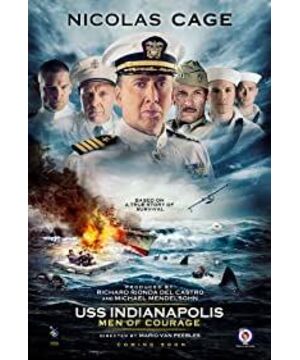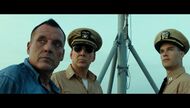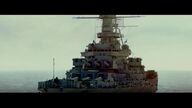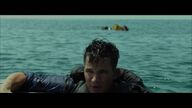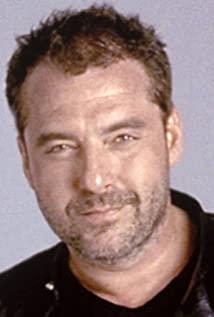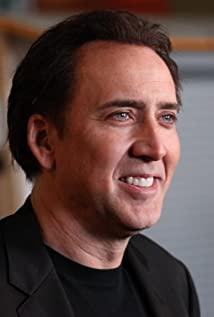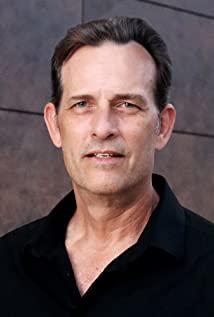Background introduction
The Indianapolis, the flagship of the 5th Fleet, has experienced several major battles since Pearl Harbor, and won a total of 10 Battle Stars until the final years of the war; but it was two years before the end of the war. Zhou ended his glorious military career with a tragedy.
Attacked and sunk
After receiving repairs and modifications, it received a top-secret order to transport the components and nuclear fuel required for the assembly of the atomic bomb to Tinian Island at high speed. The atomic bomb assembled from these important materials was later in Hiroshima. And Nagasaki (Nagasaki) planted two terrifying mushroom clouds. Due to the urgent mission, "Indy" left San Francisco on July 15, arrived at Pearl Harbor on the 19th, and arrived in Tinian on the 26th without escort. The voyage "Indy" set a record: sailing 5000 miles in 10 days from San Francisco!
After sending the top-secret cargo to Tinian, "Indy" went to Guam, and then set off for Leyte to report to Lieutenant Admiral Jesse B. Oldendorf. After that, missions will be carried out near Okinawa. On July 28, "Indy" rushed to Wright Bay without escort. It was medium sea conditions with good visibility, and the Indianapolis was sailing at 17 knots. On the morning of July 30th, not far from the warship, a Japanese submarine quietly extended a periscope. This is the large Japanese submarine I-58, the lonely "Indy" that has unknowingly become the pole of the Japanese army. Good goal. At 00:15, the Japanese captain Mochitusra Hashimoto gave an order, and the I-58 fired two torpedoes. The torpedoes accurately hit the starboard side of the "Indy". With two loud noises, the "Indy" was lit up by fire. Rushed, metal fragments splashed in the violent explosion. Twelve minutes later, "Indy" overturned and sank in the sea near 12°02' north latitude and 134°48' east longitude.
On the 31st, the ship did not arrive at Wright Bay on time, and the US military did not issue any reports for this. When "Indy" was hit, 300 crew members were killed on the spot, and nearly 900 people fell into the water. Because they were not found in time, these poor survivors had to survive in the next 5 days in order to survive the winds, waves, and water shortages. As well as the extreme fatigue of the mind and body to fight, what is even more tragic is that they also encountered hordes of bloodthirsty sharks! Many sailors who were lucky enough to survive the sunken ship became food for the sharks at this moment. Suddenly, the sea surface screamed endlessly, and large areas of the sea were stained blood red...
Until 10 a.m. on August 2, a PV-2 anti-submarine bomber of the U.S. VPB-152 squadron was conducting a routine anti-submarine patrol. By the reflection of the sun on the water, the pilot Chuck Gwinn (Chuck Gwinn) From time to time, the lieutenant saw a colorful object on the sea. After watching for a few seconds, he found that it was a long oil belt. This discovery made him very alert, because it usually means that there is a possibility that a nearby ship is about to float. Japanese submarine charging the battery! He immediately lowered his altitude and followed the fuel belt. After flying east for about 15 miles, his eyes widened suddenly-below the sea, there were scattered fragments of warships and those almost desperate. survivor!
A "Katarina" PBY seaplane arrived in the accident area under the command of Lieutenant Adrian Marks and dropped life rafts and supplies for the survivors. Then, the brave lieutenant took a risk and landed on the sea against the order and began to rescue the survivors.
Some survivors climbed onto the life raft, while others were tied to the wings. In this way, Max and his crew successfully took 56 survivors to a safe area. He also notified other U.S. Navy ships of the exact location where the "Indy" fragments were found, and three U.S. destroyers and two other ships rushed to rescue them. Since then, the US military used all air and sea rescue teams to carefully search for survivors in the nearby waters. By the end of the rescue operation on August 8, the U.S. military had been carefully searching the waters within a 100-mile radius around the clock, but only rescued 321 survivors out of the 1,199 soldiers on the ship, 4 of whom were sending off. He died shortly after going to the hospital. This is the biggest maritime disaster in the history of the U.S. Navy
It turns out that crooked nuts have to be carried away, but they are not temporary workers.
"Finally, the jury gave McVeigh a lighter punishment: After careful weighing, all those who did not report that "Indy" did not arrive in Wright Bay on time were exempted from prosecution. Although McVeigh's punishment was not serious. However, this incident stained his naval career. He was not demoted as many people expected, only to postpone his promotion. In view of the huge external pressure, he was forced to serve as Rear Admiral in June 1949. Retired from the military rank. Captain McEvoy was under a lot of pressure. Due to the accusations he received in the military court, he kept receiving letters full of resentment from the relatives of the dead sailors. The accusations made him Unable to extricate themselves, they called him a murderer, and used all kinds of vicious language to insult him. But in stark contrast, the survivors embraced him warmly, saluted him, and told him how proud he was as his subordinate. Survival After all, the motivation of the author was trivial. After his wife died of lung cancer, he was even more lonely and depressed. On November 6, 1968, McVeigh chose a special way to end these pains-he put on a stiff one. The navy uniform walked to the front porch of his apartment in Connecticut, put the barrel of a pistol in the entrance and pulled the trigger!
Finally rehabilitated
Fifty years later, in 1996, when "Indianapolis" gradually faded out of sight, there was a dramatic turn. A college student named Hunter Scott in Pensacola, Florida, watched a movie called "Jaws", in which a character recalled how sharks attacked the crew on the wrecked cruiser Yes, this inspired this "military fan" college student to be curious about the "Indianapolis" incident. Scott decided to investigate this tragedy. He found the list of survivors of the "Indianapolis". Through the visit, these survivors all told him in unison that their captain had suffered a great injustice.
Through investigation, the young Scott discovered that the Supreme Naval Command always knew that the cruiser "Indianapolis" was in extreme danger, but it had never issued a warning to the captain; he also learned that there were at least 3 A naval unit received an SOS distress signal, but they either didn't care or thought it was a trick played by the Japanese. By 1999, after the publication of Scott's research results and the content of his conversations with many survivors, there was an uproar across the country, and the calls for redress for McEvoy were higher than waves. In the spring of 2000, the U.S. House of Representatives passed a resolution by an overwhelming majority, stating that the accusations against McEvoy were "morally unfounded" and that his conviction was "unfair, causing him to be unfairly humiliated." And ruined his military career." The resolution passed by the Senate was not so harsh. The resolution only stated that McEvoy "should not be punished," but did not say anything unfair.
It confirms the words of the movie 1944-the innocent people continue to blame themselves, and the guilty people feel at ease.
Going back to the movie, the movie truly restores most of the history, but the character description is not good enough. There are several stories added. The two male soldiers like a girl and a crew member at the same time, but they do not attract the audience's interest at all. The fragments waiting for rescue are too long and protracted. Many times I watched the scenes of everyone lying motionless. What is more profound is that the last patrolling plane risked landing on the sea against the order and began to rescue the survivors. Some people say that special effects are terrible. I don't really care about this. After all, I don't really catch any special effects movies. In general, this movie is not a good one, but I can give it a passing score-6.5.
View more about USS Indianapolis: Men of Courage reviews


